#venetian plaster cost Melbourne
Explore tagged Tumblr posts
Text
Tuscan Finish exterior plaster Melbourne
At Monocol, we pride ourselves on transforming spaces with our exquisite Venetian plasters and Tuscan finishes. In the bustling city of Melbourne, where architecture speaks volumes and design is revered, our creations stand as testaments to timeless elegance and superior craftsmanship.

The Essence of Cracked Stone Plasters
Cracked stone plasters epitomize a harmonious blend of tradition and innovation. Originating from ancient techniques, they have evolved into a contemporary expression of luxury and sophistication. Each stroke of the trowel, each layer meticulously applied, encapsulates centuries of artistry and refinement.
Masterful Craftsmanship
Our artisans, trained in the time-honored traditions of Italian craftsmanship, infuse every creation with passion and precision. With an unwavering commitment to excellence, they transform ordinary walls into stunning focal points, elevating the aesthetic appeal of any space.
Eco-Friendly Excellence
In an era where sustainability is paramount, Monocol remains dedicated to eco-friendly practices. Our Venetian plasters and Tuscan finishes utilize natural, non-toxic materials sourced from reputable suppliers in Italy. By prioritizing environmental responsibility, we ensure that beauty coexists harmoniously with sustainability.
The Versatility of Cracked Stone Plasters
One of the defining characteristics of cracked stone plasters is their versatility. Whether adorning the walls of a contemporary loft or enhancing the charm of a heritage building, these finishes possess a timeless allure that transcends trends. Their tactile appeal and nuanced texture add depth and dimension to any interior, creating a sense of warmth and sophistication.
Unparalleled Elegance in Melbourne
In Melbourne, a city renowned for its vibrant culture and architectural diversity, Monocol's creations are elegant. From chic urban residences to upscale commercial spaces, our Venetian plasters and Tuscan finishes adorn interiors with a refined grace that captivates the senses.
Elevating Interior Design Standards
At Monocol, we believe that exceptional design can transform lives. By offering diverse finishes, we empower architects, designers, and homeowners to realize their creative visions. Whether seeking to evoke a sense of understated luxury or make a bold design statement, our bespoke solutions cater to discerning tastes and elevate interior design standards.
Conclusion
In the realm of interior design, where every detail matters, Monocol emerges as a beacon of innovation and excellence. Our commitment to superior craftsmanship, eco-friendly practices, and timeless design ensures that our Venetian plasters and Tuscan finishes continue to set the standard for luxury in Melbourne and beyond.
#Tuscan Finish exterior plaster Melbourne#Polished Plaster Shop Melbourne#Venetian Plaster Shop Melbourne#venetian plaster cost Melbourne#white venetian plaster Melbourne
0 notes
Text
Unveiling Elegance: Murphy Rendering's Venetian Plastering Redefines Smooth and Polished Surfaces
In the realm of interior design and architecture, achieving a seamless, high-polished surface is the epitome of sophistication and luxury. Enter Murphy Rendering, a trailblazer in the world of Venetian plastering. With their mastery of this ancient technique, they're transforming ordinary walls into works of art. Let's delve into how Murphy Rendering's Venetian plastering cost is setting new standards of elegance and refinement.
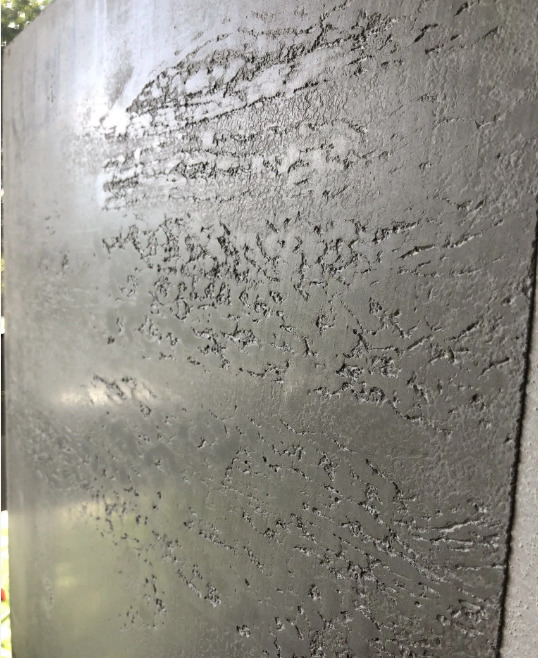
The allure of Venetian Plaster: Originating from ancient Rome, Venetian plaster has stood the test of time as a hallmark of exquisite craftsmanship. Unlike traditional paint or wallpaper, Venetian plaster creates a lustrous, marble-like finish that exudes opulence and charm. Its unique blend of lime, marble dust, and natural pigments not only adds depth and dimension but also reflects light, imparting a radiant glow to any space.
Murphy Rendering's Artistry: Murphy Rendering has mastered the art of Venetian plastering, elevating interior surfaces to new heights of beauty and sophistication. With meticulous attention to detail and a passion for perfection, their skilled artisans craft seamless, polished finishes that captivate the senses and elevate the ambiance of any room.
Smooth and Polished Surfaces: At the heart of Murphy Rendering's expertise lies the ability to create impeccably smooth and polished surfaces. Through a meticulous application process and skilled craftsmanship, they achieve a flawless finish that is both visually stunning and tactilely inviting.
Versatility in Design: One of the standout features of Venetian plaster is its versatility in design. From subtle textures to bold patterns, Murphy Rendering can tailor the plaster finish to suit any aesthetic vision. Whether it's a contemporary minimalist space or a classic architectural masterpiece, Venetian plaster adds a touch of timeless elegance to any interior.
Durability and Longevity: While the initial venetian plastering cost may be higher than conventional wall treatments, the investment pays dividends in the long run. Venetian plaster is renowned for its durability and longevity, with proper maintenance ensuring that the finish retains its luster for years to come. This makes it a cost-effective choice for discerning homeowners and designers alike.
Environmental Sustainability: Murphy Rendering is committed to eco-friendly practices, utilizing natural materials and low-VOC (volatile organic compound) products in their Venetian plastering process. This not only minimizes environmental impact but also creates healthier indoor air quality for occupants.
Exquisite Craftsmanship: Beyond just a surface treatment, Murphy Rendering approaches Venetian plastering as an art form. Each project is infused with passion, creativity, and attention to detail, resulting in bespoke finishes that transcend mere walls and become expressions of individuality and style.
Venetian Plastering Cost Considerations: While the venetian plastering cost may vary depending on factors such as the size of the project and the intricacy of the design, it's important to view it as an investment in quality and beauty. With Murphy Rendering's unparalleled craftsmanship and commitment to excellence, clients can rest assured that every dollar spent translates into a stunning transformation that enhances the value and appeal of their space.
In Conclusion: Murphy Rendering's mastery of Venetian plastering represents a fusion of artistry, craftsmanship, and innovation. By harnessing the timeless allure of this ancient technique, they're reshaping interior design landscapes and redefining the concept of luxury living. With their expertise, attention to detail, and dedication to customer satisfaction, Murphy Rendering is poised to continue setting new standards of elegance and refinement in the world of Venetian plastering. So, why settle for ordinary walls when you can indulge in the timeless beauty of Venetian plaster?
Contact- Web - https://www.murphyrendering.com.au/venetian-plastering-melbourne Mail - [email protected] Ph - 0411 279 461 Address - Melbourne, AU
0 notes
Text
So What’s The Deal With Textured Walls?
So What’s The Deal With Textured Walls?
Interiors
Lauren Li

The home of Emma Lane, featuring a custom cement and sand render, with pigment added for an environmentally friendly, truly unique finish! Photography – Caitlin Mills for The Design Files. Styling – Annie Portelli
To say that the world has been rocked this year is an understatement. The global pandemic has shifted our priorities inwards to the home, and given a sharp focus on what really matters. We’re all looking at our homes in a totally new light.
The current mood has us cocooning at home, where we want to celebrate the simple things. More than ever, our home is our sanctuary, and we need to feel connected, so we crave earthy, natural elements. We’re looking for honesty in design. The wabi-sabi ideas of finding beauty in imperfection and impermanence are really resonating right now, and our homes can reflect this feeling. Whilst these ideas have been showing in interiors for the past few years (you can read about Japanese design here), it seems that the current climate is accelerating the trend for a handcrafted, layered and textural home.

The award winning ‘Budge Over Dover’ project by YSG Studio in Sydney features extensive use of Venetian Plaster, on both walls and ceilings. Photo – Prue Ruscoe.

YSG Studio’s ‘Budge Over Dover’ project features pigmented Venetian Plaster on both walls and ceilings. Photo – Prue Ruscoe.

The home of Barb Hyman in Melbourne features textured limewashed walls, for an old-world feel. Photography – Caitlin Mills for The Design Files. Styling – Annie Portelli
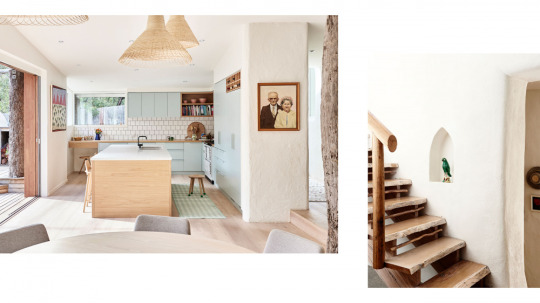
The home of Arabella and Chris Wilson features mud-rendered, painted internal walls. Photography – Eve Wilson for The Design Files.
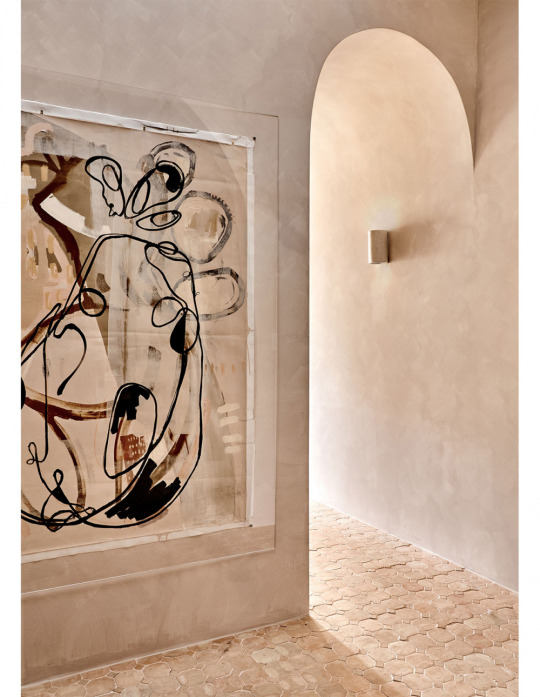
Home of Georgia Ezra (Tiles of Ezra). Photo – Amelia Stanwix.

A lime wash paint was used to achieve this soft, velvety texture in the Balnarring home of Kate Dinon. Photo – Rhiannon Taylor. Styling – Chelsea Hing.

The incredible home of Emma Lane. featuring a custom cement and sand render, with pigment added for an environmentally friendly, truly unique finish! Photography – Caitlin Mills for The Design Files. Styling – Annie Portelli

Rendered, textural walls in the Sydney home of William and Julia Dangar. Photography – Caitlin Mills for The Design Files. Styling – Annie Portelli
WALLS
We’re definitely seeing a huge trend towards textured wall finishes right now. These wall treatments exude a natural, earthy warmth that celebrate imperfection, and pair beautifully with other textural materials, such as raw timber and slubby linen. For this look, we want the walls to have a warmth about them, looking a little more like the baked earth of the Mediterranean, rather than the cold concrete of an industrial warehouse.
There are many ways to achieve a textural look on internal walls, from bagged brick, to cement render… but the trends were seeing most prominently right now all involve one key component – lime, aka crushed limestone.
Limewash Limewash is essentially a painted surface that incorporates tiny particles of crushed limestone, creating surfaces that are mottled and matte, with a chalky texture –something like suede. Available in a wide array of different colours, limewash lends luminosity to flat walls, and brings real depth to a space.
Look to the warmer colours in a lime wash paint or suede effect that lean to brown or yellow, like beige, cream and cashmere. Steer clear of textured walls in bright colours such as turquoise and purple that were applied using sponges in the 90s or the bright orange ‘Tuscan’ look. This time around it’s about a more natural, earthy look.
Venetian Plaster When pigment is added to aged slaked lime plaster, the finish is known as Venetian plaster. The application in thin translucent layers creates a uniquely textured, soft yet polished finish, giving the appearance of depth and movement due to the marble dust combined with lime. Seen internationally in projects by designers-to-the-stars Axel Vervoordt and Vincent Van Duysen, we’re seeing a lot of this polished plaster finish in Australian interiors right now – and there’s no better example than in the award-winning ‘Budge Over Dover’ project by YSG Studio in Sydney, which features pigmented Venetian Plaster in a range of incredible colours, on both walls and ceilings!
Tadelakt Tadelakt has a similar soft, textural appearance to a limewash effect, but is perfect for wet areas. It’s a waterproof lime plaster surface used in Moroccan architecture. As it’s applied to the surface with a trowel, it gives a beautiful seamless appearance. Unlike tiles in the bathroom, there are no grout lines and it applies to curves effortlessly. When applied by a professional installer it can be used on all surfaces in a bathroom; walls, floor; vanity bench, and even the vanity basin.

Left: collections of handcrafted and vintage ceramics in the home of Emma Lane. Right: Travertine bedside table in the home of Alex Bennet. Photography – Caitlin Mills for The Design Files. Styling – Annie Portelli.

Bedrock display case for Future Collective. Photo – Pip Newell.

Den Holm Australian limestone sculpture in the home of Melissa Marshall. Photography – Caitlin Mills for The Design Files. Styling – Annie Portelli

American oak and travertine coffee table designed by David Harrison of Design Daily and made by Cranbrook Workshop. Photo – Caitlin Mills for The Design Files. Styling – Annie Portelli.

A rendered chest of drawers adds texture in the home of Tamsin Johnson. Photography – Caitlin Mills for The Design Files. Styling – Annie Portelli

Limestone sculptures by Lucas Wearne of Neighbourhood Studio. Photo – Amelia Stanwix for The Design Files.

A travertine table in the home of Alex Bennet. Photography – Caitlin Mills for The Design Files. Styling – Annie Portelli.
FURNITURE, ART + OBJECTS
Creating a textural interior isn’t just limited to walls – furniture, objects and accessories all contribute to a layered, tactile space.
Organic rock forms were seen all over the Stockholm Furniture Fair in February where they were represented through vessels, lamps, tables and décor objects. Closer to home, we’re seeing naïve carved stone-like furniture, handcrafted sculptural limestone art and objects, and a huge trend in vintage stone tables right now!
Travertine Pieces made from natural stone that come from the earth are always a thing of beauty. Incorporating a textured natural stone such as travertine, complete with its imperfect holes and crevices just makes it more beautiful. We’re seeing lots of travertine furniture available from vintage and secondhand sellers at the moment – check out Curated Spaces, en gold or Just Adele.
Stone + Australian Limestone Furniture pieces carved out of stone blocks by the likes of Den Holm, Lucas Wearne and Future Collective hold a ‘refined prehistoric’ aesthetic that is bursting with creativity – and no two pieces are exactly the same. They bear the marks made by human hands, not cookie-cutter off a factory line.
For smaller art pieces with a similar finish, check out Jessica Tremp and Jan Vogelpoel.

the supremely textural home of Georgia Ezra (Tiles of Ezra)! Photo – Amelia Stanwix.
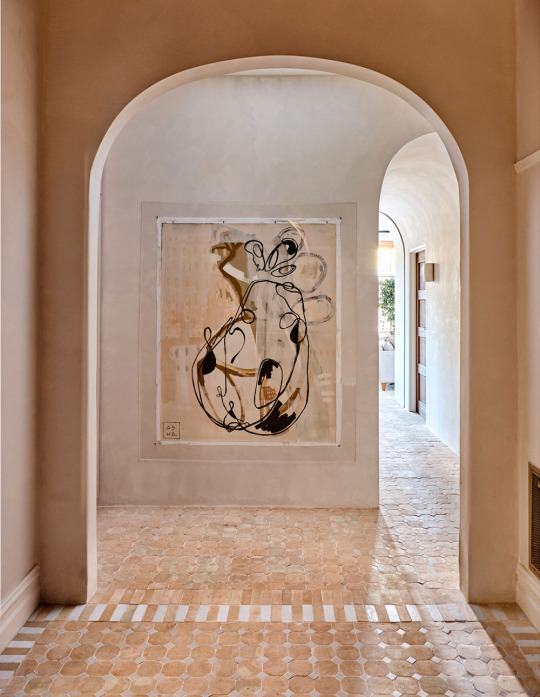
Texture on show in the home of Georgia Ezra (Tiles of Ezra). Photo – Amelia Stanwix.

Home of Georgia Ezra (Tiles of Ezra). Photo – Amelia Stanwix.

An eclectic mix of handmade tile and textural wallpaper in the Melbourne home of Alex Mccabe. Photo – Amelia Stanwix for The Design Files. Styling – Annie Portelli.
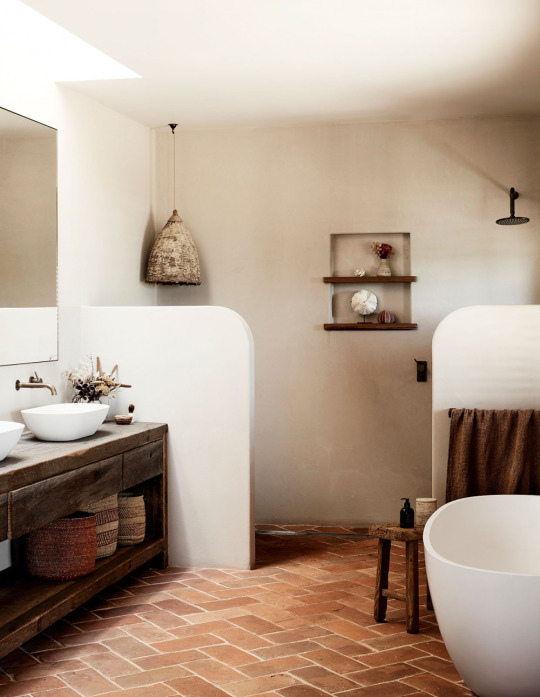
Chalky, textural walls and terracotta tiles floors in the home of Emma Lane. Photography – Caitlin Mills for The Design Files. Styling – Annie Portelli

Inexpensive stone tiles achieve a similar aesthetic to a slab of stone or marble – at a fraction of the cost! Seen here in The Dairy by Andrea Moore. Photo – Eve Wilson. Styling – Andrea Moore.

The Dairy by Andrea Moore. Photo – Eve Wilson. Styling – Andrea Moore.
TEXTURED TILES
Tiles with a tactile finish and imperfect edges celebrate hand craftsmanship. A Zellige tile that is handmade by artisans in Morocco has a totally unique surface – the clay is kneaded with water, moulded by hand, dried naturally and fired in a kiln. A factory simply can’t imitate the character of thesse handmade tiles – when installed over bathroom walls or for a kitchen splashback; they come to life.
Check out Tiles of Ezra from interior designer Georgia Ezra who specialises in authentic handmade tiles from Morocco, Vietnam and Mexico – and has showcased them to spectacular effect in her own Melbourne home!
We have also seen the return of terracotta tiles in recent years, they really are so timeless. Terracotta tiles that have a raw, matt finish that layers beautifully with other natural materials – also consider exposed brick for internal flooring, it’s definitely making a comeback, particularly in warmer parts of the continent.
Another option to consider is rough-hewn stone tiles, which achieve a similar aesthetic to a slab of stone or marble – at a fraction of the cost.
0 notes
Text
Ten Things You Should Know Before Getting Into The Painters Dublin Industry.
Our trusted and highly knowledgeable painting and decorating team can help with all aspects of your project. — L Stimson Painting (@decoratorindroi) September 26, 2017
Your area of painting have to be properly ventilated without any harmful obstacles. Repair the surface if any. Several folks believe painting job is an unskilled perform, but the truth is, it is skilled profession exactly where technical experience is vital to accomplish a very good job. Painters in south-east Melbourne technically guide clients to painting. Jake Marsh is 1 of the professional painters in Melbourne possessing much more than 15 years of expertise in each residential and commercial painting. He has been functioning with lots of consumers and established his personal organization as decorators in Melbourne and painter in Melbourne. Apply the paint with the assistance of roller or brush.

Choose the ideal dwelling paint color based on the room. You ought to dependably start painting with the regions that are complicated to reach like the corners and the edges. At that point you can preserve painting the more substantial zones where the paint is necessary. Apply the paint with the help of roller or brush. To paint the roofs, consist of an expansion length of the paint roller or contact experienced painters. But that does not imply that you can't prepare for their flamboyant look. Receiving a canvas of drop cloths is quite low-priced and it serves as an perfect covering for practically any surface. The paint will also dry out faster, so you won’t track any of the spilt paint about your residence. Just maintain in thoughts that canvas can get very slippery when placed on a hard flooring. This, nevertheless, can be conveniently fixed by getting some sheets of rosin paper. Foolproof the location by taping the sheets with each other and then to the floor itself to create a solid base for the cloth canvas. When a spill takes place, make sure to blot it as quickly as attainable with either towels or cloth rags. Redecorating and rearranging interior of your household is occasionally a terrific thought depending upon your mood. The finest way to go about redecorating is to start off with one particular project at a time and move on from there. You will in all probability locate that as soon as you get began, property decorating isn't as difficult as you thought, and it can also be fun as you see your home seeking better with every single modify you make.
Preparing surfaces for painting or clear finish
A bucket of water and spray bottle for misting
Check the match of your respirator as per the manufacturer's directions
Student/Employer Contribution fees [PDF 70kB]
Disposable dust masks (suggested)
Preparing surfaces and removing old paint
Is there a warranty on your work
These are costs are for painting walls and ceilings and involve materials. We are also assuming that the walls have been previously painted and the plaster is in great situation. Prices could be 50-75% higher if walls were previously papered and plastering is needed. Wallpapering walls that had been previously painted must work out equivalent to the costs stated above also. There are specific occasions of the year when painters and decorators are really busy and, as a outcome, rates are greater.
youtube
Getting the right team to paint (visit the up coming site www.fixr.com/costs/paint-house) your residence can feel overwhelming, but with CertaPro Painters® you will have peace of mind. We are specialists in residential painting that treat your residence with the care it deserves. Step One particular: We connect. Get began on your painting project by undertaking a free on the net estimate. Our team can also come to your property and go over further facts of your project through a time that’s practical for your schedule. Step Two: We seek advice from. It will appear exactly like three men and women took element in painting it (not a fantastic look). Completing an whole apartment prime to bottom in 1 day? Not definitely - unless you have a compact army of painters to enable you. Having away with just 1 coat of navy blue or red paint? The items is, home painting is all exciting and games only on your Tv screen. In reality, it is typically a messy, time-consuming and frustrating job - specially if you never know what you are performing. On the other hand, painting is not just about lathering the walls with lead-no cost colours. If you consider that a small bit of wall art will only lighten up the space, then the painters’ abilities are at your service. They can even do Venetian texturing, murals and much extra, as lengthy as you give them a wall for a blank canvas. As for decorating the location, the guys like to turn their imaginations on by drawing references from other works and mixing that with their personal genius. Vanilla extract is wonderful for negating the permeating smell of heavy paint fumes - just add a tablespoon to your bucket of paint and see for your self! Cover your door hinges with some masking tape to leave their original colours intact. A lint roller is all you require to take the fuzz off your paint roller and get down to perform. Don’t have a paint brush holder? Just use an empty plastic bottle alternatively. The expense of getting your whole property re decorated occasionally would not even come close to the expense involved in moving, particularly in the course of today's climate exactly where lots of dwelling owners remain in unfavorable equity. Hiring a specialist painter and decorator is a preferred solution for quite a few house owners who would not generally have the time to do the function themselves. It indicates you can make the modifications you want, effortlessly and at an cost-effective price tag. And the decorators themselves are thriving with the further demand, with some even getting to turn down operate. Interior painting is not just about the beauty of the creating but it also can alter our life style. The appearance of any kind of the constructing can be changed with the enable of interior painting and interior designers. A small compact property can get a expensive trendy look with a correct interior paint and style. Even a big home gets a clumsy and congested look with poor interior designing and painting.

A fire coatings painter will use a wide assortment of various fire retardant coatings, with the most common fire retardant coating being nullifier paint. These paints are created to withstand a quite high quantity of heat, therefore keeping the structure underneath the coating as protected as probable for as long as attainable. These paints have to be applied to a certain thickness, in quite a few applications. Final, but not least, we have the general painter and decorator. this article A common painter and decorator will commonly be more buyer focused and will, extra normally than not, location a significantly bigger emphasis on top quality rather than quantity.
0 notes
Text
Venetian Plastering in Melbourne
Venetian Plastering is a decorative technique that gives a stunning look to walls. It is available in many different colours and can enhance any room. Venetian Plastering Melbourne is quite popular for its own traits.
Traditional plaster is made of slaked lime and marble dust, mixed with animal glues or casein and then coloured with natural pigments. Waxes and oils can be added to give a variety of textures and sheens.
Cost
Traditional Venetian plaster or “Marmorino” is a pigmented lime plaster mixed with marble dust that can give walls an incredibly polished and textured finish. The result can be breathtakingly beautiful and offer a deep sheen that resembles real marble itself.
It is resistant to environmental humidity, impermeable to water if sealed and will actually self-heal cracks over time. While it may be more expensive than other wall finishes such as stucco concrete or microcement, it is also much more durable.
There are many factors that determine the price of a Venetian plaster application, including square metres of wall or ceiling that need to be coated, the applicator’s labour rates, travel costs and any other additional expenses. The best way to get an accurate estimate is to book a site visit with your chosen professional. During this time they can measure the area and provide you with a detailed quote for the work. The price will include all materials, labour and cleaning.
Applicators
Typically, the applicators who apply Venetian plaster are highly trained and experienced. They understand the different products and can advise which finishes work best for your home or project. They can also explain what base coats are required and which waxes and sealers should be used.
The finish on a Venetian Plaster wall can have an impressive, glossy shine. The polishing process combines heat and pressure to give it a deep, crystalline beauty. Its lustrous appearance can enhance any room. It’s often used in areas that are difficult to carve from marble, such as columns or curves.
Venetian plaster isn’t suitable for all projects, though. Because it is not very flexible, it may not be the right choice for areas where walls and ceilings must flex. For these applications, something like microcement would be more appropriate. It’s also expensive, but it’s worth the investment for the unique look that it adds to a space.
Materials
Venetian plasters are available in a wide range of finishes, with varying textures and depth. They are suitable for interior walls, including wet areas like bathrooms. The lime content naturally repels mildew, making the plaster easy to clean and maintain.
The traditional makeup of Venetian Plaster consists of little more than lime slake and water, with aggregates added as needed to create the desired look. Marble dust is commonly used to achieve a polished finish, while river sand is often used to create a more earthy appearance.
Before applying the Venetian plaster, the surface should be primed with an acrylic Quartz primer. This primer contains fine Quartz aggregate and has a texture that is similar to 220 grit sandpaper.
The Venetian plaster can then be sanded, burnished and waxed to enhance the visual depth and subtle textures. Waxing also protects the plaster and allows it to be buffed to a glass-like shine. Our advanced training course is primarily aimed at plasterers, decorators and designers who already have experience working with trowels and blades, and want to add artistic polished plaster to their repertoire of skills.
Installation
Venetian plaster can be used on walls to add a rich texture that has movement and depth. It also looks much more beautiful than paint, especially when it’s burnished to a shine. But it can be a challenge for homeowners who want to do it themselves.
Taking a course can help them learn the basics of working with plaster. They can also learn how to prepare a room for plastering. For example, it’s important to lay down tarps to protect the molding and other surfaces that aren’t being plastered. They should also use masking tape to avoid getting plaster on their skin or breathing in the dust.
While it’s not as simple as painting, learning the technique can save homeowners time and money. They can even save on hiring a professional. This is an attractive option for anyone looking to add a luxurious look to their home. It’s also naturally anti-bacterial and mildew resistant, making it a great choice for bathrooms.
0 notes